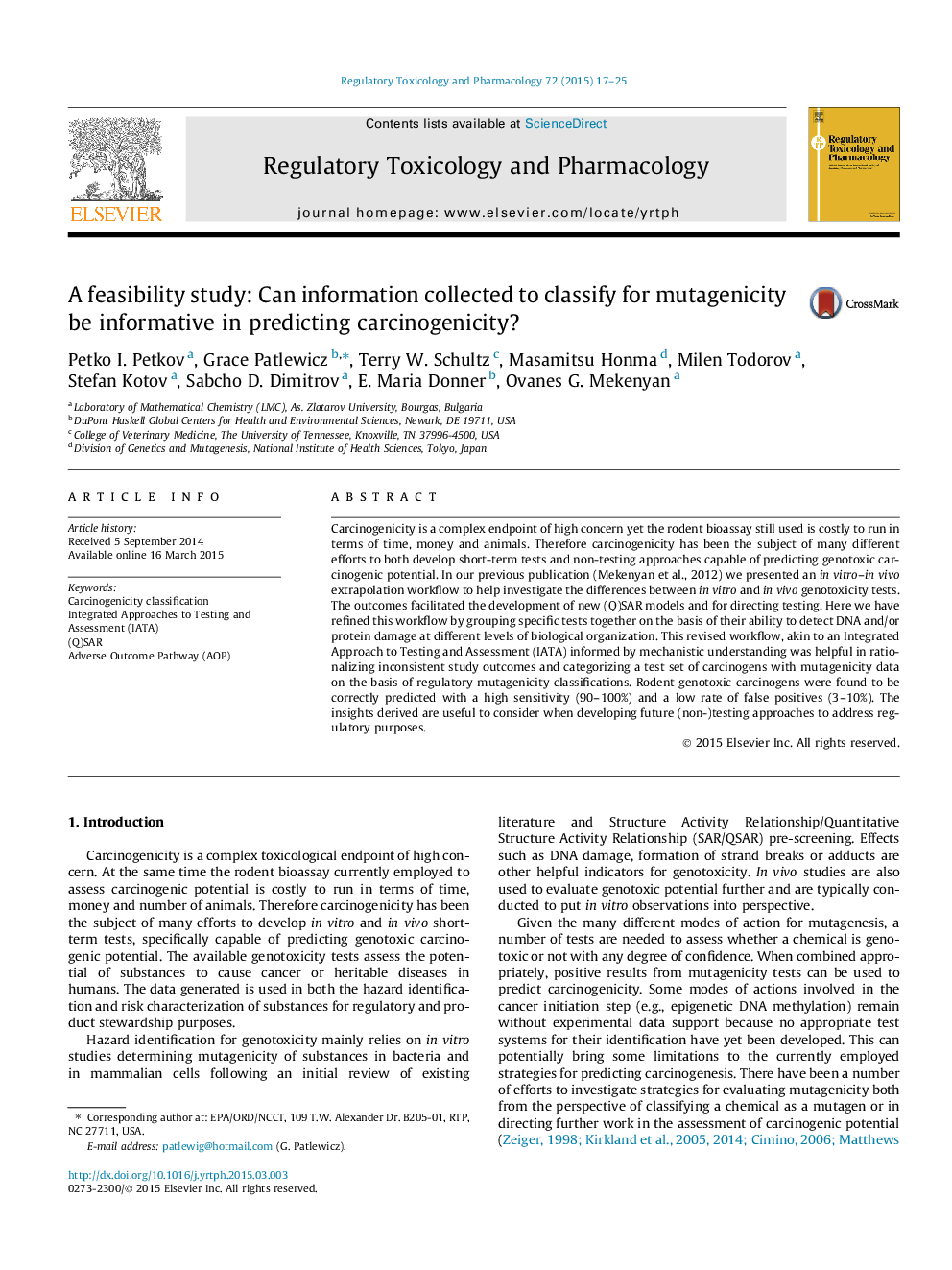| کد مقاله | کد نشریه | سال انتشار | مقاله انگلیسی | نسخه تمام متن |
|---|---|---|---|---|
| 5856536 | 1131977 | 2015 | 9 صفحه PDF | دانلود رایگان |
عنوان انگلیسی مقاله ISI
A feasibility study: Can information collected to classify for mutagenicity be informative in predicting carcinogenicity?
ترجمه فارسی عنوان
یک مطالعه امکان سنجی: آیا می توان اطلاعاتی را برای طبقه بندی برای جهش زایی در پیش بینی سرطان زایی مفید بود؟
دانلود مقاله + سفارش ترجمه
دانلود مقاله ISI انگلیسی
رایگان برای ایرانیان
موضوعات مرتبط
علوم زیستی و بیوفناوری
علوم محیط زیست
بهداشت، سم شناسی و جهش زایی
چکیده انگلیسی
Carcinogenicity is a complex endpoint of high concern yet the rodent bioassay still used is costly to run in terms of time, money and animals. Therefore carcinogenicity has been the subject of many different efforts to both develop short-term tests and non-testing approaches capable of predicting genotoxic carcinogenic potential. In our previous publication (Mekenyan et al., 2012) we presented an in vitro-in vivo extrapolation workflow to help investigate the differences between in vitro and in vivo genotoxicity tests. The outcomes facilitated the development of new (Q)SAR models and for directing testing. Here we have refined this workflow by grouping specific tests together on the basis of their ability to detect DNA and/or protein damage at different levels of biological organization. This revised workflow, akin to an Integrated Approach to Testing and Assessment (IATA) informed by mechanistic understanding was helpful in rationalizing inconsistent study outcomes and categorizing a test set of carcinogens with mutagenicity data on the basis of regulatory mutagenicity classifications. Rodent genotoxic carcinogens were found to be correctly predicted with a high sensitivity (90-100%) and a low rate of false positives (3-10%). The insights derived are useful to consider when developing future (non-)testing approaches to address regulatory purposes.
ناشر
Database: Elsevier - ScienceDirect (ساینس دایرکت)
Journal: Regulatory Toxicology and Pharmacology - Volume 72, Issue 1, June 2015, Pages 17-25
Journal: Regulatory Toxicology and Pharmacology - Volume 72, Issue 1, June 2015, Pages 17-25
نویسندگان
Petko I. Petkov, Grace Patlewicz, Terry W. Schultz, Masamitsu Honma, Milen Todorov, Stefan Kotov, Sabcho D. Dimitrov, E. Maria Donner, Ovanes G. Mekenyan,
